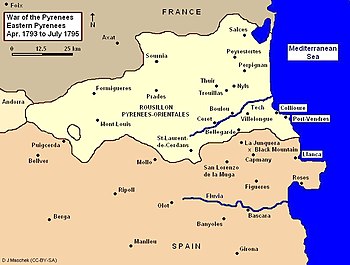
The Second Battle of Boulou took place during the War of the Pyrenees, part of the French Revolutionary Wars. This battle saw the French Army of the Eastern Pyrenees led by General of Division (GD) Jacques François Dugommier attack the joint Spanish-Portuguese Army of Catalonia under Lieutenant General (LG) Luis Fermín de Carvajal, Conde de la Unión. Dugommier's decisive victory resulted in the French regaining nearly all the land they lost to the Kingdom of Spain in 1793.

The War of the Pyrenees, also known as War of Roussillon or War of the Convention, was the Pyrenean front of the First Coalition's war against the First French Republic. It pitted Revolutionary France against the kingdoms of Spain and Portugal from March 1793 to July 1795 during the French Revolutionary Wars.

The Battle of Truillas saw the Republican French Army of the Eastern Pyrenees led by Luc Siméon Auguste Dagobert attack the Spanish Army of Catalonia commanded by Antonio Ricardos. This attempt by the French to exploit their success in the Battle of Peyrestortes ended in a Spanish victory. Dagobert tried to outflank the Spanish left wing, but Ricardos blocked the move. Dagobert then attacked the Spanish center and had initial success, but Ricardos rapidly shifted his forces to counter the French. Thwarted, Dagobert was finally compelled to order a retreat. Dagobert's scornful treatment of two key subordinates was one reason for the lackluster French performance. The battle was fought near the village of Trouillas in the French department of Pyrénées Orientales during the War of the Pyrenees.

Peyrestortes is a commune in the Pyrénées-Orientales department in southern France.
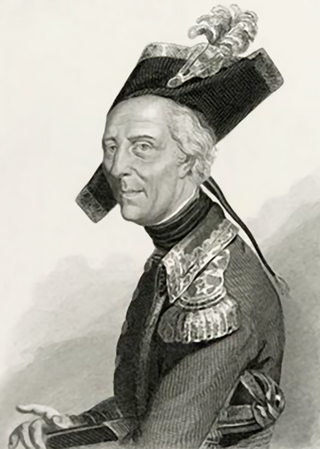
Luc Siméon Auguste Dagobert de Fontenille was a French general of the French Revolutionary Wars.

The Army of the Eastern Pyrenees was one of the French Revolutionary armies. It fought against the Kingdom of Spain in Roussillon, the Cerdanya and Catalonia during the War of the Pyrenees. This army and the Army of the Western Pyrenees were formed by splitting the original Army of the Pyrenees at the end of April 1793 soon after the war started. Shortly after the Peace of Basel on 22 July 1795, the fighting ended and the army was dissolved on 12 October that same year. Many of its units and generals were transferred to join the Army of Italy and fought under Napoleon Bonaparte in 1796.
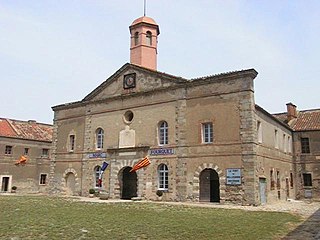
The siege of Bellegarde commenced on 23 May 1793 and ended on 24 June 1793 when Colonel Boisbrulé's French garrison surrendered the Fort de Bellegarde to a Spanish army under the command of Antonio Ricardos. The capture of the fort gave Spain control of an important road through the Pyrenees. The siege took place during the War of the Pyrenees, part of the French Revolutionary Wars. Fort de Bellegarde is on a height overlooking the border town of Le Perthus, which lies on the modern A9 autoroute and Autovía A-7.
Eustache Charles Joseph d'Aoust was a general officer during the French Revolutionary Wars.

Antonio Ricardos Carrillo de Albornoz was a Spanish general. He joined the army of the Kingdom of Spain and fought against Habsburg Austria, the Portugal, and the First French Republic during a long military career. By embracing the Spanish Enlightenment, he earned the displeasure of conservative elements of society. He played an active role in reforming the Spanish military. Upon the outbreak of the War of the Pyrenees in 1793, the king sent him to command in Catalonia. He invaded Roussillon where he won several victories over the French. After his death in early 1794, the war went badly for Spain.
Louis-Charles de La Motte-Ango, vicomte de Flers joined the French Royal army and rose in rank to become a general officer in the French Revolutionary Wars. After serving in the Austrian Netherlands, he was appointed to command the Army of the Eastern Pyrenees. His army suffered several defeats in May and June 1793, but he rallied his troops to win a defensive victory at the Battle of Perpignan in July. The all-powerful Representatives-on-mission arrested him in August 1793 for a minor setback and sent him to Paris under arrest. The Committee of Public Safety executed him by guillotine on trumped up charges in the last days of the Reign of Terror. De Flers is one of the names inscribed under the Arc de Triomphe.
Jerónimo Morejón Girón-Moctezuma, 3rd Marquis de las Amarillas, born 7 June 1741 at Málaga and died 17 October 1819 at Seville, became a general officer in the army of the Kingdom of Spain and commanded division-sized combat units during the War of the Pyrenees in 1793 and 1794. Though he attained high rank, he displayed limited military talent. Shortly after succeeding to the top command of the Army of Catalonia, he was dismissed for blunders made on the battlefield.

Juan Courten y Gonzalez was a Spanish military officer. He began his career in the War of the Austrian Succession at the age of 14. Courten fought in the Spanish–Portuguese War (1761–1763), the Invasion of Algiers in 1775, and the Great Siege of Gibraltar. He was the last Spanish governor of Oran in 1792. As a lieutenant general, he led an infantry division during the War of the Pyrenees against the First French Republic in several actions including Perpignan, Peyrestortes, Truillas, Boulou, and the Black Mountain. He was appointed Captain General of Aragon in 1795.

The Battle of Perpignan or Battle of Niel(fr:Bataille de Perpignan) on 17 July 1793 saw the French Army of the Eastern Pyrenees led by Louis-Charles de Flers defending against an offensive by the Spanish Army of Catalonia commanded by Antonio Ricardos. The French turned back the Spanish attacks and forced their opponents to pull back. Perpignan is now the capital of Pyrénées Orientales department, but in 1793 was the chief city of Roussillon province. The action was fought during the War of the Pyrenees, part of the War of the First Coalition.
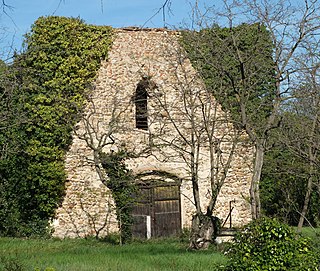
The Battle of Mas Deu or Battle of Mas d'Eu on 19 May 1793 saw the French Revolutionary Army of the Eastern Pyrenees under Louis-Charles de Flers fighting Bourbon Spain's army of Catalonia led by Antonio Ricardos.
Jacques Gilles Henri Goguet rose to command a French division during the French Revolutionary Wars before he was assassinated by his own soldiers after a defeat. Trained as a physician, he studied medicine at the University of Montpellier before becoming a member of the French National Guard in 1789. He joined a volunteer battalion in 1792 and fought at Jemappes in November that year. In 1793 he was promoted to general officer and transferred to the Army of the Eastern Pyrenees. In September 1793 when a Spanish army threatened to surround Perpignan, the French army commander fled, leaving the army leaderless. In the emergency, Goguet cooperated with Eustache Charles d'Aoust to win the Battle of Peyrestortes. A few days later he commanded the right column under Dagobert at Truillas, where poor relations with his commander led to the failure of the attack.

Hilarion-Paul-François-Bienvenu du Puget de Barbantane disgraced himself during the French Revolutionary Wars by abandoning the Army of the Eastern Pyrenees during a crisis. A nobleman, he was made colonel of the Aunis infantry regiment in 1788. He was promoted general of brigade in 1791 and general of division the following year. He intrigued to obtain command of the Army of the Eastern Pyrenees and got his wish when Louis-Charles de Flers was dismissed in August 1793. When the Spanish commander Antonio Ricardos surrounded Perpignan with a chain of fortified camps, Barbantane panicked and fled the city, going absent without leave.

The Battle of Collioure saw troops from Spain attack a French division during the War of the Pyrenees. The Spanish troops led by Gregorio García de la Cuesta were completely successful in ousting the French under Louis Pierre François Delattre from Collioure, Fort Saint-Elme and Port-Vendres. The contending sides were the Spanish Army of Catalonia commanded by Antonio Ricardos and the French Army of the Eastern Pyrenees led by François Amédée Doppet and Eustache Charles d'Aoust. In September 1793, the French successfully defended Perpignan from Spanish attack but December saw a series of French defeats. One of the French representatives on mission, Claude Dominique Côme Fabre was killed during the fighting at Collioure. Aoust and Delattre were arrested, condemned and executed by guillotine for the disaster.
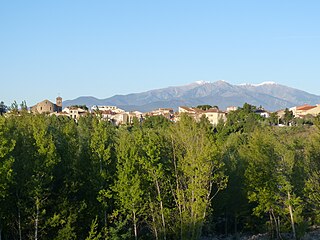
The First Battle of Boulou saw a Republican French army led by Eustache Charles d'Aoust attack a Spanish Royal army commanded by Antonio Ricardos. Despite winning a recent victory over the French, Ricardos fell back to the Tech River valley where he had his troops construct a fortified camp. On 3–4 October, the Spanish army successfully defended its camp at Le Boulou against several French assaults. After a French night attack on 14–15 October against the Pla-del-Rey entrenchments also failed, d'Aoust withdrew his forces, having suffered disproportionate losses. D'Aoust was soon replaced in army command by a new leader.

The Battle of Villelongue saw a Royal Spanish force from the army commanded by Antonio Ricardos attack a position held by a Republican French force from the army led by François Amédée Doppet. Spanish and French attack columns passed each other in the night without detecting each other. On 7 December, the Spanish attack on Villelongue-dels-Monts was delivered first and was completely successful, causing the French soldiers to flee. On 18 December, in order to cover a planned withdrawal, Doppet ordered an attack on the Portuguese garrison at Villelongue. Eustache Charles d'Aoust carried out the operation and overwhelmed the Portuguese. However, two days later, the French army was disastrously defeated at the Battle of Collioure and had to beat a hasty retreat to Perpignan.

Guillaume Mirabel became a general of brigade in the army of Republican France during the French Revolutionary Wars. He was born in the south of France and enlisted in the French Royal Army as a dragoon in 1768. Appointed a cavalry instructor, he fought in the Army of the Eastern Pyrenees against the Kingdom of Spain. In 1793, he fought at the battles of Mas Deu, Perpignan, Peyrestortes, and Truillas, and was wounded four times. He led a brigade at Second Boulou in May 1794. A promising leader, Mirabel was killed in action while leading his troops at the Battle of Sant Llorenç de la Muga. MIRABEL is one of the names inscribed under the Arc de Triomphe.


